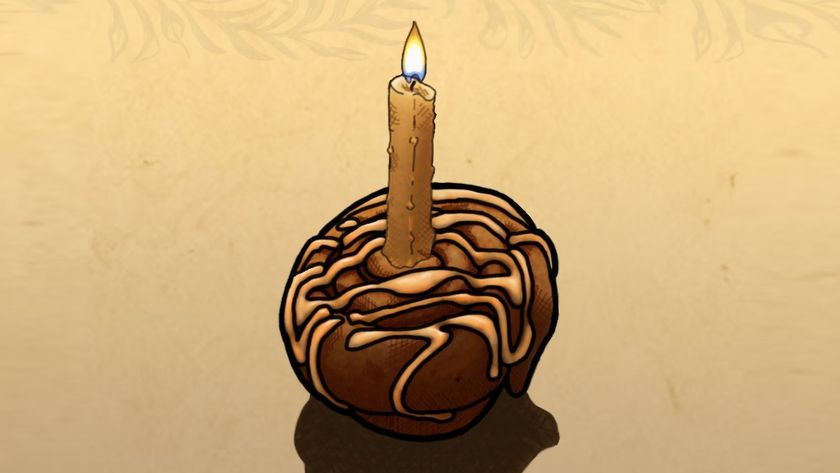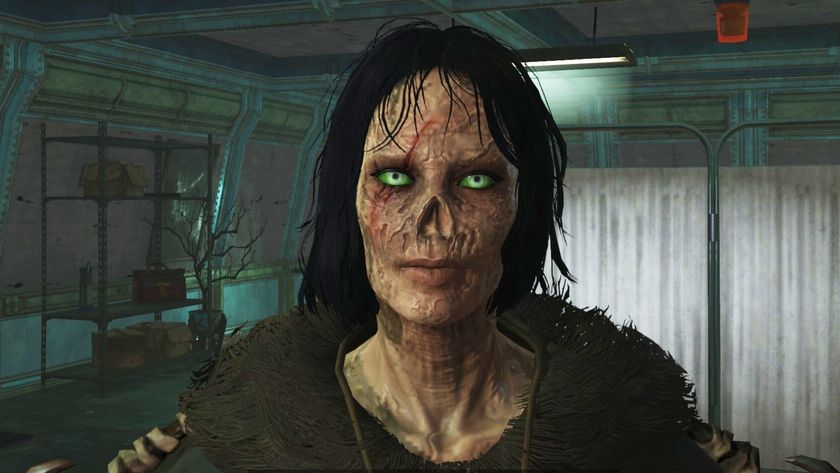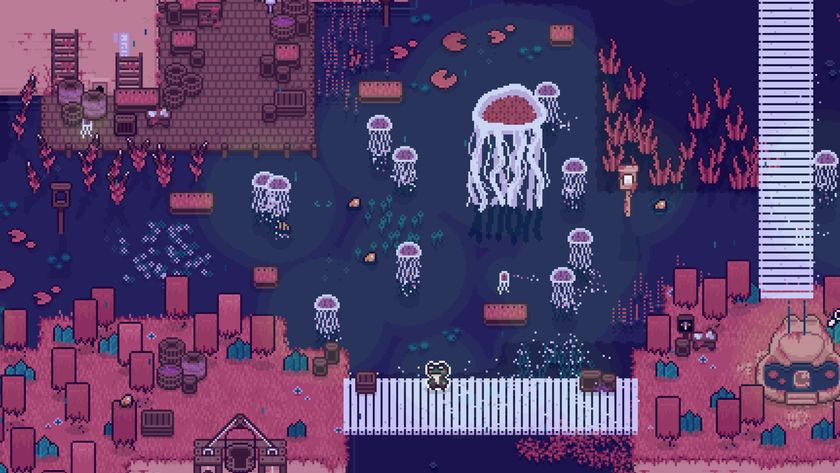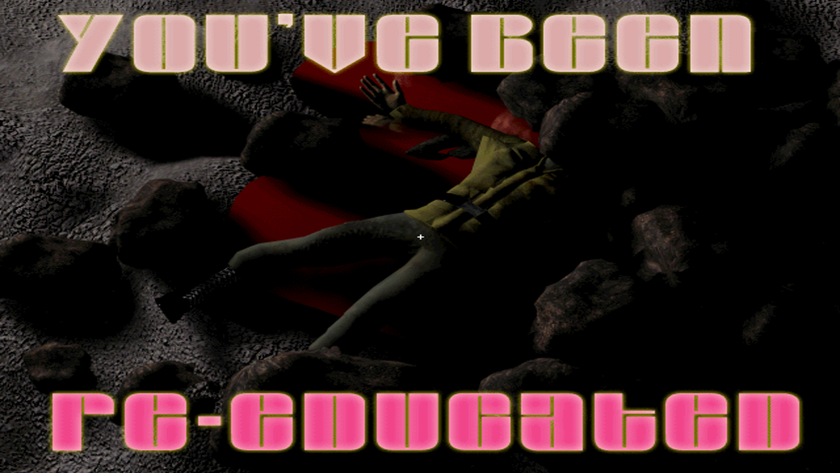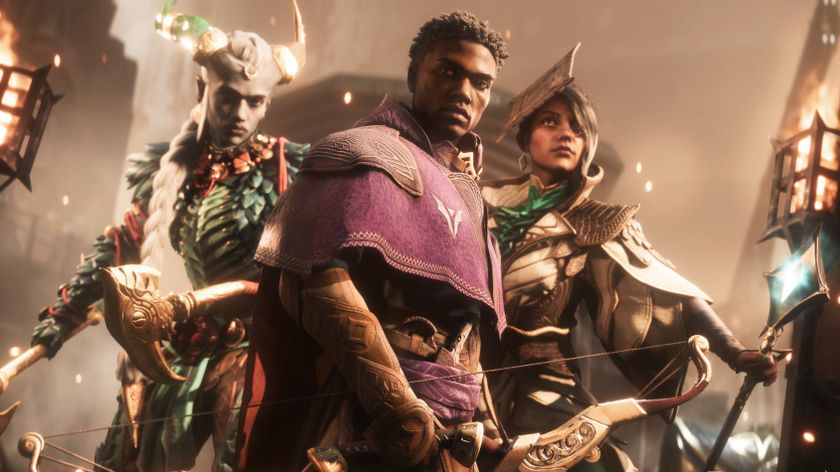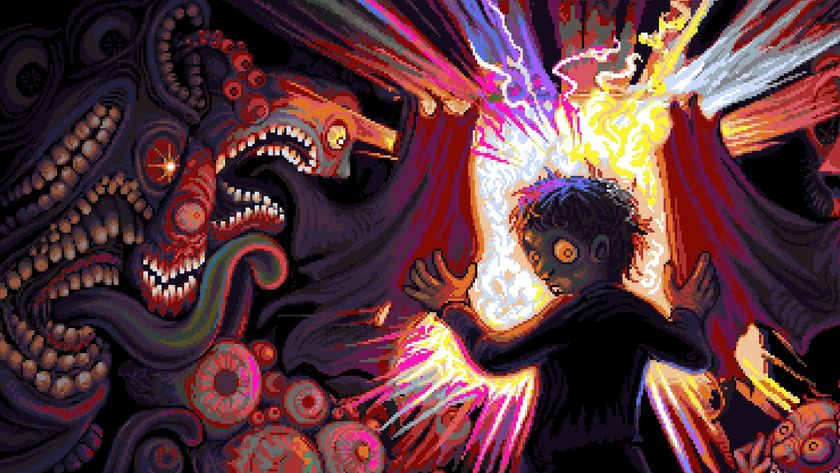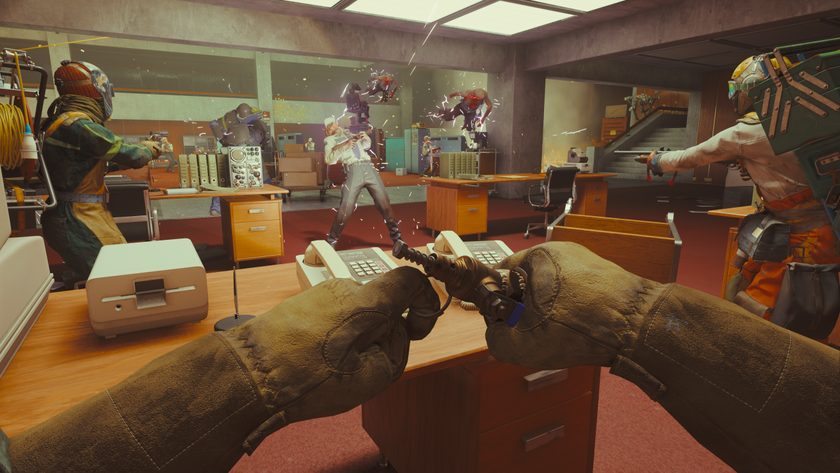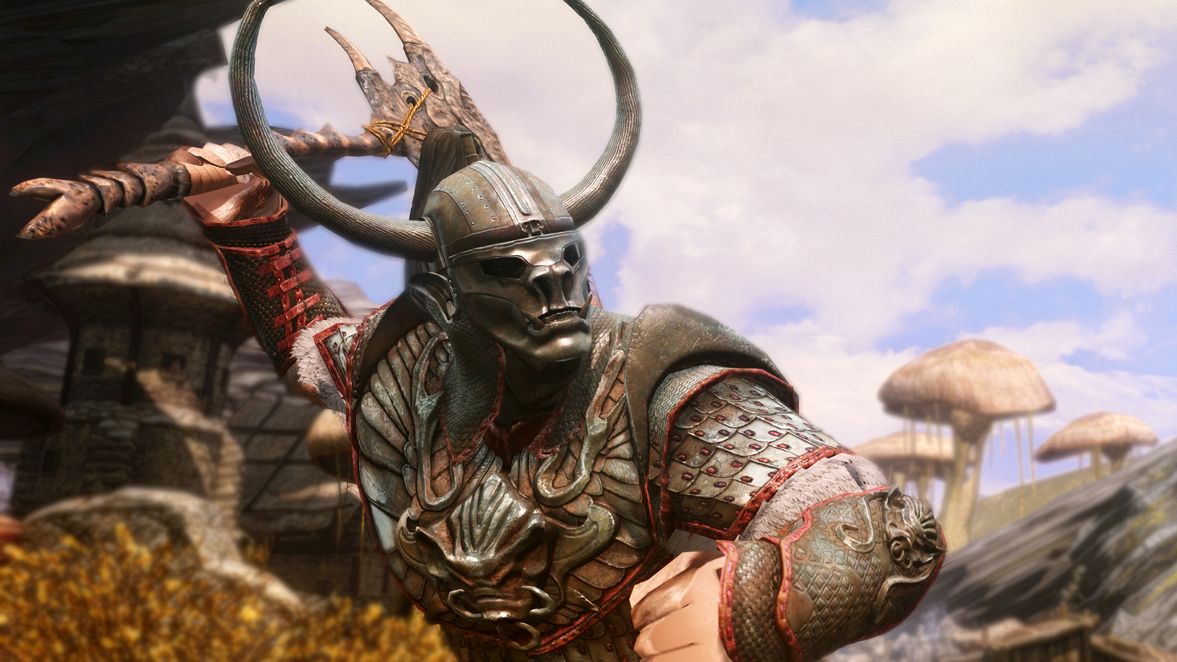
A mushroom towers above you, reaching for the sky. The place feels familiar, but the light has changed. Plants have taken root in previously barren land, new rocks jut from the earth like gnarled fingers. It’s the same, but different—a place inspired by what came before. “A complete remake and re-imagining of Morrowind,” in the words of Brandon Giles, one of the lead developers of the ambitious community project Skywind. The mod aims to draw players fresh and old to the world of Bethesda’s 14-year-old RPG.
Skywind had its inception in 2012. The seeds can be found in Morroblivion, which ported Morrowind’s content into Oblivion’s engine. Once the project came to an end, some leftover team members decided to attempt a similar feat—this time using Skyrim as their base.
“It wasn’t until late into the following year that the project evolved into what it is now,” Giles says of the Elder Scrolls Renewal Project, of which Skywind is a part. “[We] aspired to do something greater than a mere port of Morrowind. No one really knows the exact point that this switch happened, but I think as we got more and more talented individuals on board, we really broadened our horizons and looked to make something much more special. Since then the vision has only grown.”
Skywind’s global team was brought together by a love of the Elder Scrolls series. They’re all volunteers, and their ultimate reward for the thousands of hours invested will be the finished project itself. The challenge they have set is to take a classic and renovate it, improving it graphically and bringing the world’s density, life and interactions up to the standards set by today’s open-world games.

The team, though scattered, has clear lines of management. Tasks are chopped into manageable chunks and assigned by the development leads. Countless spreadsheets are assembled in order to keep track of the various tasks and deadlines. The driving force is a small core team, working with and managing the vast array of people who have volunteered their time.
These team members all share the same broad vision for Skywind. Morrowind is a game that now shows its age. The locales feel barren and sparse compared to modern achievements, the fog-cloaked horizon is a stark contrast to the immense draw distances we’re now accustomed to. The team have to address this disparity, filling in areas of the world with new content. This act of creation in a game so revered comes with its own difficulties—the additions must merge seamlessly with the established world. Skywind will include the story and quests familiar to Morrowind players, but some carefully constructed new missions have been added. The ultimate aim is that new content should be indistinguishable from the old.
Modifying a classic is no easy task, and the team must tread carefully when deciding on additions. Every idea goes through a vetting process. “When someone has a new suggestion, and they’re serious enough about it, they write up a detailed plan and share it with the rest of the team,” Giles says. “Everyone leaves comments and suggestions and we work from there, and if it’s worth implementing, we’ll put in the effort to make it a reality.”
The biggest gaming news, reviews and hardware deals
Keep up to date with the most important stories and the best deals, as picked by the PC Gamer team.
Additions are rigorously scrutinised to ensure that they meet the same high standards across the board. The gatekeepers of quality are several industry professionals, who are lending their expertise partly because of a deep love for the Elder Scrolls series, and partly to work on a project that’s free from corporate oversight.
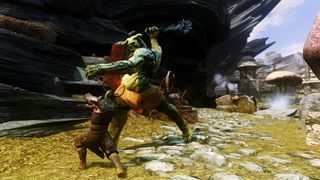
‘Lore masters’ also pick over any suggestions with a fine-tooth comb—guaranteeing that everything fits within the universe set out by the Elder Scrolls games. These team members have been followers of the series since the start, and are able to draw from their own deep knowledge of the world, as well as consult the extensive wikis and other reference sources. They are essentially historians—historians with the advantage of being in direct communication with the creative mind behind a large part of the world and lore of Morrowind, former Bethesda designer Michael Kirkbride.
Enthusiasm can only take you so far, however, and the attrition rate among Skywind’s voluntary team is high. “The success of the project has been that, out of a number of people who have offered to help, you get one that really sticks with the project,” Darren Habib, one of the team’s veterans, says. “I’ll put a rough figure to it: out of every 100 people that join up to do some tasks, only one person will actually carry on to progress the project.”
‘Lore masters’ also pick over any suggestions with a fine-tooth comb—guaranteeing that everything fits within the universe set out by the Elder Scrolls games.
The bulk of development is therefore handled by the core team, but they still want the project to remain as open as possible. They leave the door open in order to attract unique individuals able to contribute. Burnout is high—true of any voluntary project—but the team understand this, allowing people to take breaks when they need them. They have managed to keep morale high with their continuous communication and recruitment. Everyone is kept in the loop and made to feel a part of the community.
The legacy of the original game released back in 2002—the third in the Elder Scrolls series—still casts a long shadow. Its weird world is filled with wonders, from magically crafted mushroom architecture to the sprawling waterway-filled city of Vivec. Morrowind captured—and continues to capture—the hearts of its players.
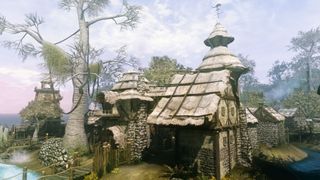
The action mostly takes place on the island of Vvardenfell, which today stands out as delightfully alien compared to other locations in the Elder Scrolls series. All of Bethesda’s worlds have had their quirks, but none have had nearly as diverse a landscape as that found in Morrowind. Each region feels fresh and different, its architecture and landscapes drawn from different inspirations.
The first Elder Scrolls games, Arena and Daggerfall, presented players with huge worlds, using random generation to map out and stock their myriad dungeons. Morrowind broke with tradition; Bethesda opted to create a smaller, more detailed, world than its predecessors. Throwing out the random generation, the game’s designers hand-crafted every section of the world. This painstaking approach proved a massive undertaking, but the payoff was worth it. The developers’ love and attention shines through in the design of every location. From the caves of skooma-smuggling bandits, to the tombs cobwebbed with history linked to actual families in-game.
Post-Morrowind, there have been two new main Elder Scrolls releases: Oblivion and Skyrim. These build upon the foundations laid down by Morrowind, inevitably changing aspects of it as well. “The strength of Elder Scrolls games—especially Morrowind—has always been believable world building and focus on exploration,” says Max Fellinger, Skywind’s game mechanics lead. “Skyrim shifted away from this to present a more streamlined reward-curve, based mostly on dungeon-crawls.”
The team faces the challenge of deciding which new features from Skyrim should carry over to Skywind and which should be consigned to history. They have to determine how best to retain the feel of Morrowind while keeping any improvements made by the new game. Abilities such as shouts, tied specifically to the Dragonborn protagonist, have been removed completely. In general, Skyrim felt more focused on player skill, like modern action games, while Morrowind focused on character skill, like a classical RPG.
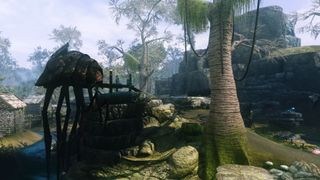
For instance, contrary to the implications of its first-person action combat, Morrowind used the classic RPG dice roll to decide what happened in a fight. Your sword might hit an enemy’s flesh, but it was a behind-the-scenes number that decided whether or not you did serious damage. It’s a system that lacks responsiveness. Skyrim has far better feedback, because it’s driven more by the player’s actions than their character’s stats.
However, as a result, Skyrim is more uniform when it comes to the character builds of its players. There are certain core abilities and skills that almost everyone upgrades, while others are largely ignored. Morrowind encouraged players to have more freedom in their choices. There’s no single correct build. Some balancing issues remain, but in general players have a wider range to choose from.
Skywind again aims high. Its ultimate goal is to have all lines of dialogue fully voiced.
The challenge, then: how best to fix Skyrim’s problems without recreating Morrowind’s unresponsiveness? The developers have a balancing act on their hands, merging two disparate systems into a cohesive whole. Their approach has been to strip down the Elder Scrolls and other RPGs to their core, and find out what makes them tick—how the gears of their various systems mesh together. Ultimately, the team want to craft an experience that brings back some of the systems of classic RPGs, giving players the freedom to build a character in whatever way they want.
In Morrowind’s original release, dialogue was largely confined to text boxes, with only a small percentage of it voice acted. Skywind again aims high. Its ultimate goal is to have all lines of dialogue fully voiced. “Our biggest challenge is the sheer number of voice actors we’re going for,” voice acting lead Ben Iredale told me. “Unlike Bethesda’s situation, where they focus on a smaller cast of actors covering the majority of lines, we’re looking to have a pretty massive amount of unique voices to cover the roughly 40,000 lines of dialogue that are in Skywind. We think it is worth the extra effort especially since it is one of the benefits we have as a community project—there are so many dedicated fans ready to lend their voices.”
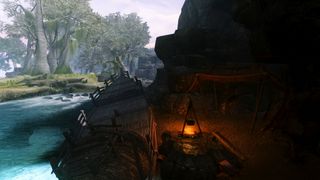
Skyrim’s world often comes close to a place that feels like home. At least until a guard tells you, yet again, about how their previous career as an adventurer was brought to a close by an arrow to the knee. Idle banter can make or break immersion in virtual worlds, especially those that support hundreds of hours of exploration.
For Skywind, Iredale says that a team of writers have crafted 9,000 in-game conversation lines between NPCs, giving each character their own essence of personality. The final release will include priests discussing the 36 lessons of Vivec, and merchants arguing over prices—little touches that breathe life into the world.
On release Morrowind was praised for its vision and fully 3D world. Time has not been so kind. Its once vaunted graphics are now showing their age. Giving Morrowind back its beauty is a major objective for the Skywind team—they want to recreate the world with all the bells and whistles we’ve become accustomed to in modern games. This is no walk in the park: the team have to rebuild the world from the ground up.
Interpreting the low poly models and textures is one challenge, according to Aeryn James Davies, Skywind’s lead artist. “[It’s] practically impossible without going back to the drawing board and looking at pre-3D concepting by the original team. We went back to the original concepts of Kirkbride and others and reworked it from the earlier stages. The 3D representation of 2D concepts are always limited by the technology of the time. Fourteen years is a big difference in processing power.”
The evolution of videogame graphics in the intervening time has given the team the chance to make something really special, building on the ambitions of what came before. The redesign ranges from equipment to landscapes, with a particular focus on ensuring each area of the island has its own distinctive feel.
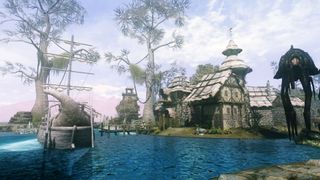
“We felt that each region of the game deserved its own unique set of assets and textures to expand on the exotic nature of the original,” says lead landscape designer Giles. “As a result, each area looks and feels much different than from before. Any Morrowind purist might be upset by the new changes, but we really wanted to do something different instead of just adding shinier texture work and remodelled objects. There have been countless fans who have commented on videos or screenshots of the game saying ‘it looks and feels exactly as I remember!’ so I think even with these major changes, the charm and spirit of Morrowind has definitely carried over to this new design.”
Azura’s coast is just one of the regions undergoing a dramatic change. It was originally sprinkled with menhirs, but the Skywind team have transformed it into a landscape filled with striking basalt formations, quietly betraying Vvardenfell’s volcanic roots. An overhaul of this scale could have been a disaster, but it’s handled with care by the team—changing the visual identity of the region while staying true to the heart and soul of Morrowind.
The team’s ambitions aren’t restricted to improving the variety of the landscape, either. They’re aiming to make Skywind’s graphical quality in its entirety exceed that of Skyrim—itself now almost five years old. The team feels able to do this because their focus is solely on the PC. Where Bethesda had to take ageing console tech into account, Skywind’s developers are free to concentrate on a single, more powerful platform.
The mod itself remains without a release date—the general feeling being that it’ll be done when it’s done. Still, there’s confidence that it will, eventually, be done. In the years since the mod’s initial reveal there has been the constant worry that it might end up as vapourware—all stylish screenshots and video, but never making it to a final release. It’s a consequence of the team’s open development. Professional studios only reveal projects after years of work. Skywind has been in the wild since day one. Viewed this way, their progress in the last four years has been remarkable from a group of volunteers.
The project inches ever onwards, getting closer to its release, but there is still plenty of work to be done and new volunteers are always welcome. The team have a lot riding on this—a lot of people to please—but each and every one is convinced they will deliver what they have promised. They probably won’t have to resort to using magic to get there.
By Edward Bals.
The collective PC Gamer editorial team worked together to write this article. PC Gamer is the global authority on PC games—starting in 1993 with the magazine, and then in 2010 with this website you're currently reading. We have writers across the US, UK and Australia, who you can read about here.



